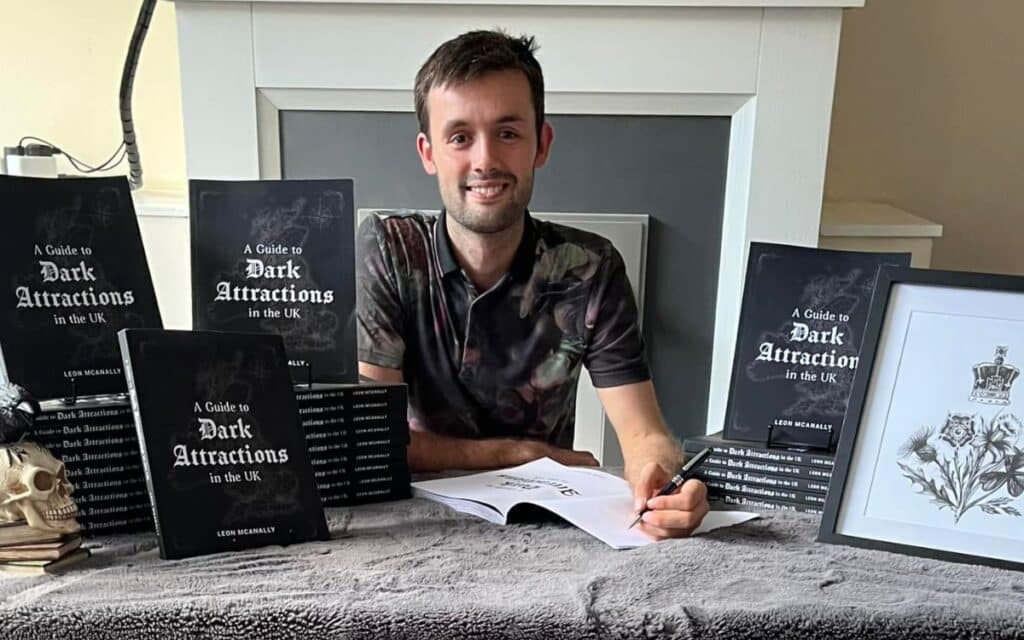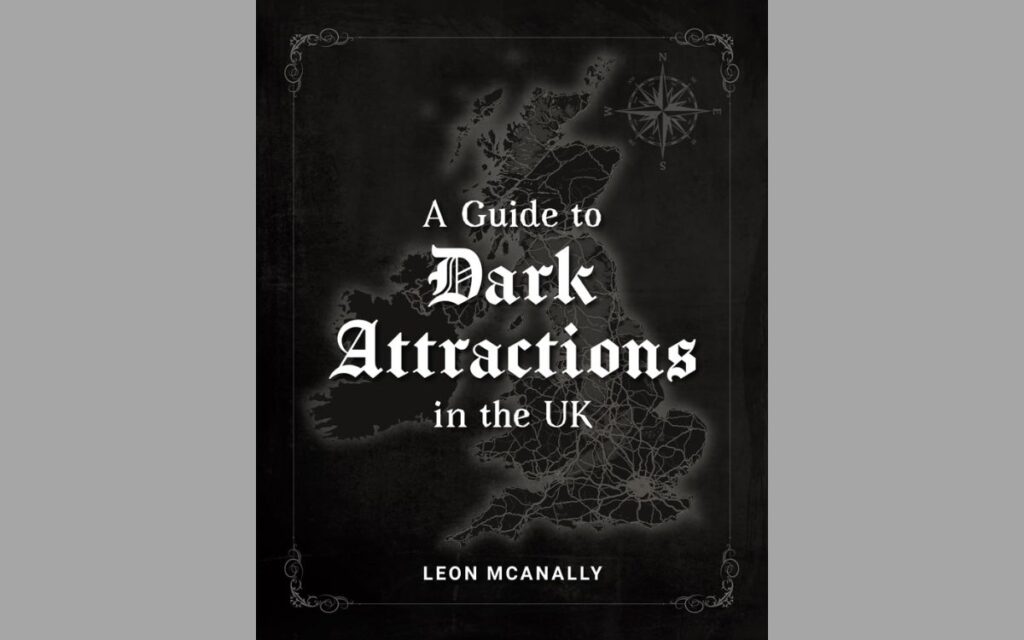Author Leon McAnally talks to Spooky Isles about his new book, A Guide to Dark Attractions in the UK, uncovering the eerie and tragic sites across Britain that define dark tourism

At Spooky Isles, we’re no strangers to the eerie and macabre, always on the hunt for the next haunted spot or grim piece of history.
So, when we heard about a new book that delves into the darker corners of the UK, we knew we had to learn more.
We sat down with Northampton-based author Leon McAnally for the Spooky Isles Podcast to discuss his debut book, A Guide to Dark Attractions in the UK – a comprehensive exploration of more than 300 sites linked to death, tragedy, and mysteries across Britain.
The Birth of a Dark Tourist
Leon’s journey into the world of dark tourism began in his hometown of Bury St Edmunds, a place rich with history that piqued his early interest.
His passion deepened while studying Travel and Tourism at West Suffolk College, where he first encountered the concept of dark tourism.
“Growing up, I was heavily influenced by history, but it wasn’t until college that I learned about dark tourism,” Leon said. “It opened my eyes to the kinds of places connected to death and tragedy, like Ground Zero or Auschwitz.”
But it was the realisation that the UK lacked a comprehensive guide to its own dark sites that truly set Leon on his path. After speaking with fellow travelelrs who were unaware of similar attractions in Britain, Leon decided to fill that void.
“Speaking to people on tours abroad, they weren’t aware that similar sites existed in Britain,” he explained. “That’s when the wheels started turning, and I began researching sites across the UK.”
Leon defines dark tourism as visiting places associated with death, suffering, and tragedy – whether these are sites of violence, cemeteries, or memorials to disasters, both manmade and natural.
His book spans a wide range of these locations, from infamous sites like Fred and Rosemary West’s 25 Cromwell Street to less well-known spots like the Barnsley coal mining disaster memorial.
Interestingly, Leon chose to exclude certain types of dark sites from his book. While he does touch on notorious cases like Fred and Rosemary West, he avoids focusing heavily on murder sites, which he felt were already well-covered in other books.
“I wanted to create a range,” Leon said. “There are so many books on criminal murders, but I wanted to explore a broader spectrum – from castles and cemeteries to nuclear bunkers and witchcraft sites. I didn’t just want to go down the castle route, because there are already so many books on that.”
The Research Behind the Book
Leon’s research process was both extensive and methodical. He scoured social media, engaged with attractions directly, and drew parallels between UK sites and their European counterparts.
For instance, he compared the Victorian cemeteries of the UK with the Monument Cemetery in Milan, highlighting the shared architectural styles and historical influences.
One particularly fascinating discovery was the Curiosities from the Fifth Corner in Great Leighs, in Essex, a shop offering taxidermy parts, skulls, and other oddities.
Another was the lesser-known Barnsley coal mining disaster, England’s worst mining disaster, which claimed 361 lives but has largely faded from public memory. “The Barnsley disaster killed over 361 people, yet it’s not as well-known as other tragedies like the Aberfan disaster. That was really interesting and a bit surprising to me,” Leon said.
The Emotional Impact of Dark Tourism
Some of the sites Leon explored were emotionally challenging. Writing about recent events like the Manchester bombing memorial, for instance, brought up ethical questions about how to present such sensitive topics.
“Writing about the Manchester bombing made me feel uneasy,” Leon admitted. “It’s recent, and you want to make sure you’re telling the factual history correctly.”
Similarly, learning about those persecuted for witchcraft, like Alice Nutter of the Pendle Witches, left a lasting impression on him.
“The witchcraft memorials were really touching. People were persecuted and shunned by their communities for simple things, sometimes just for trying to help others with herbal remedies,” he shared.
These stories of innocent lives destroyed by fear and superstition underscore the darker aspects of human history that Leon hopes to shed light on through his work.
Leon’s book is not just for those fascinated by the macabre; it’s for anyone interested in the rich tapestry of British history.
Whether you’re intrigued by the gruesome past of a medieval castle or the eerie beauty of a Victorian cemetery, there’s something in his guide for everyone.
You can find Leon McAnally’s book, A Guide to Dark Attractions in the UK, on Amazon. For more updates and information, visit his website or follow his Facebook page, Dark Attractions in the UK.
What’s your favourite Dark Attraction in the UK? Tell us in the comments section below!


